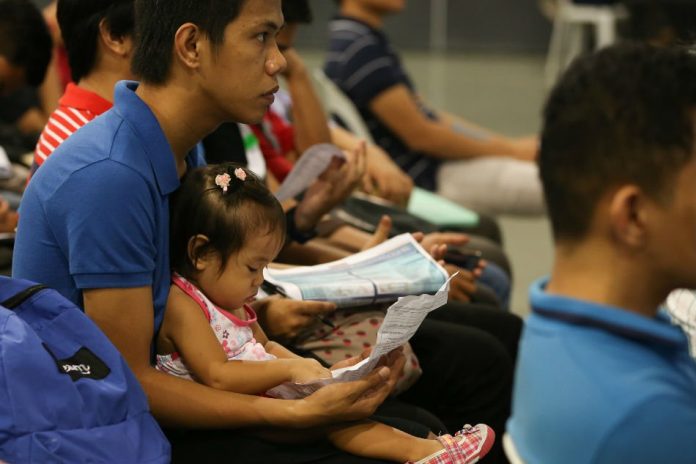
MANILA – Men are not necessarily breadwinners as far as the Philippines’ labor force survey that sums up the employment situation in 2018 is concerned.
According to the “2018 Annual Estimates of Labor Force Survey” released by the Philippine Statistics Authority (PSA), more than half or 63.2 percent of the 2.3 million unemployed Filipinos this year are males compared with 36.8 percent of the unemployed who are women.
This means that 1.45 million of the 2.3 million unemployed Filipinos are men as against 846,400 women of the country’s labor force.
By educational attainment, 21.0 percent of the unemployed were college graduates, while 15.9 percent were college undergrads.
In terms of education, the biggest chunk or 29 percent of the unemployed completed junior high school – which include high school graduates under the old, four-year high school curriculum.
The current curriculum provides six years of high school divided into a four- year junior high school and a two-year senior high school.
2.3 million unemployed
The 2.3 million unemployed, however, were lesser compared with 2.4 million Filipinos without a job in 2017.
The Ilocos Region registered the highest unemployment rate at 6.8 percent, followed by Calabarzon at 6.6 percent.
On the other hand, 75.2 percent of the unemployed belonged to the 15 to 34 age group.
The number of employed Filipinos increased by at least 800,000 this year to 41.1 million, higher than the 40.3 million in 2017.
“Employed persons were grouped into three broad sectors, namely, agriculture, industry and services …” said Undersecretary and National Statistician and Civil Registrar General Lisa Grace Bersales.
Workers in the services sector are the largest group of employed persons that make up 56.6 percent of those employed in 2018, she said.
“Workers in the agriculture sector were the second largest group, making up 24.3 percent of the total employed in 2018. Workers in the industry sector, on the other hand, make up the smallest group registering 19.1 percent of the total employed,” Bersales added.
In 2017, the services sector also accounted for the lion’s share of the employed at 56.3 percent. Workers in agriculture comprised 25.4 percent, while industry sector accounted for 18.3 percent.
There were more unemployed males (63.2 percent) than unemployed females (36.8 percent) last year.
By educational attainment, 21.0 percent of the unemployed in 2017 were college graduates, 15.9 percent were college undergraduates, and 29.0 percent were able to complete junior high school under the four-year curriculum.
Underemployment
The number of the underemployed this 2018, or those who “express the desire to have additional hours of work in their present job, or to have additional job, or to have a new job with longer working hours,” slightly increased to 6.7 million from 6.5 million last year.
The numbers are based on the 60.9 percent labor participation rate out of the 71.3 million that comprised the labor force 15 years old and above.
The labor participation rate includes all the economically active individuals that comprise both the employed and unemployed persons.
While more people are employed this year, 2018’s 60.9 labor participation rate was lower than 2017’s 61.2 percent. (GMA News)



